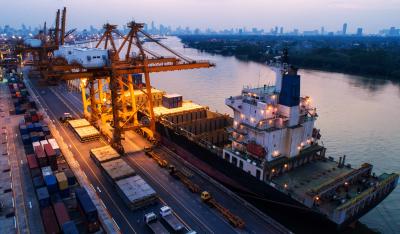Did you know that it takes over twelve hours to fly from China to the United States? With such a large distance between them, it is not surprising that the regions differ in many ways, from culture to industry. Here, Jonathan Wilkins, marketing director at obsolete industrial parts supplier, EU Automation explains the main differences between the manufacturing markets in the United States and the Asia Pacific region. The fourth industrial revolution, Industry 4.0, that brings the Internet of Things (IoT) to industry, first began in Germany. Manufacturers worldwide aim to compete with companies by investing in the technology introduced during this period. According to the Global Competitiveness Index, manufacturing is an important industry in both the United States and Asia. America has been a manufacturing power for the majority of its history and greatly contributes to the countries’ economy. The US has also been an innovator in the sector, most notably for inspiring the second industrial revolution with Henry Ford’s ground-breaking assembly line. However, Asia is widely regarded as the manufacturing hub of the world. The largest country in the region, China, has led the manufacturing sector in the last few years and smaller Asian countries are climbing the ranks. These two regions are competing for the top position as the global leader in manufacturing, and the US is expected to overtake China to take the top spot by the end of the decade. So, what does the manufacturing sector look like in each region? Industry 4.0Both countries have embraced the changes introduced by the fourth industrial revolution. Governments in both Asia and North America have introduced policies and incentives to integrate more technology into factories. With automated systems, both manufacturing hubs can increase productivity, offering more customisable products at a lower price and reduce both waste and risk of downtime. Asian manufacturers in leading countries, such as China, were quick to embrace new technology and emerge as innovators in manufacturing. Asia has both invested and produced a high volume of robots to remain competitive. Asia installed around 689,349 industrial robotics units in 2013 and this is expected to increase to around 1.1 million by the end of 2017. Asia is known for its cutting-edge technology, investing in robots and artificial intelligence (AI) to revolutionise industry and everyday life. Singapore is leading this innovation, introducing technology to city infrastructure to become a smart nation. In the US, automotive manufacturing is the main sector that benefits from automated assembly lines. Businesses can provide high quality vehicles that are assembled cost-effectively and efficiently. HubsAsia Pacific and North America are both large geographic areas, so it is difficult to pinpoint one specific hub. Different areas of both regions develop at different rates and contribute to the respective economies in different ways. Many Western countries outsource manufacturing labour, relying on Asia to provide the majority of goods, as labour and materials are less expensive. While China is best known for its large factories producing the majority of goods, other countries in Asia Pacific contribute to the manufacturing economy of the region. In India, for example, over 40 per cent of factory work is completed by robots. This is expected to rise to 70 per cent by 2020. India also introduced the “Make in India” initiative in 2014, investing in technology to become a leader of the Industrial IoT revolution. The FutureGovernments across Asia and the US hope to encourage economic growth by investing in automation and manufacturing. In 2011, President Obama introduced the Advanced Manufacturing Partnership (AMP) to bring government, universities and industries together to invest in emerging technology and enhance the US manufacturing sector. This partnership recommends enabling innovation, securing the talent pipeline and improving the business climate to become leaders in advanced manufacturing. Some governments in Asia are also investing in automation. Made in China 2025 encourages the improvement of production in the country, to move to higher quality manufacturing. Smaller countries, such as India, Korea and Japan, are also hoping to innovate their own respective manufacturing sectors through automating the supply chain. Even though Asia Pacific and the US are separated by the Pacific Ocean, they both rely on manufacturing to support their economies. While they may embrace automation at different rates and with different technologies, it is clear that both areas will continue to be leaders in the sector.
| An EU Automation release || September 29, 2017 |||





